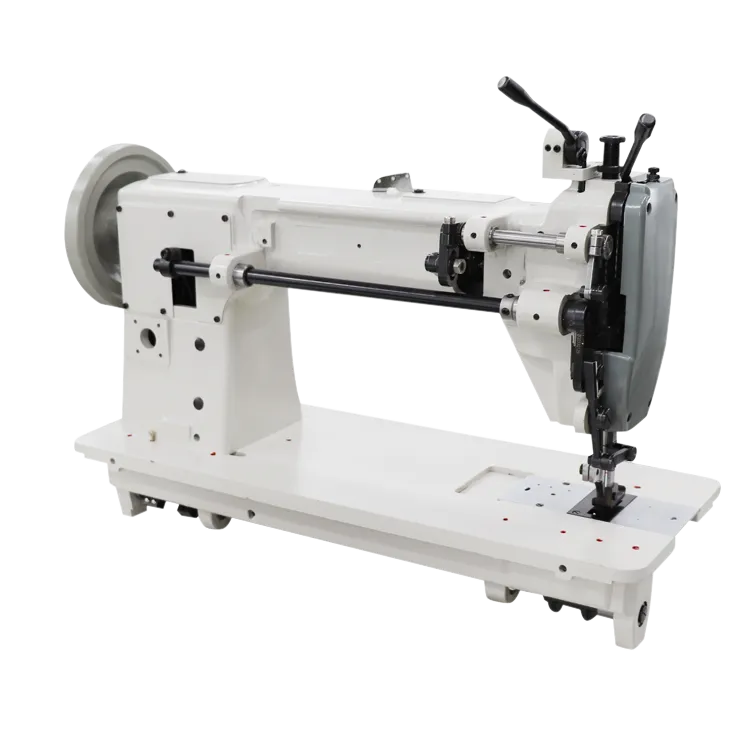Exploring the Benefits and Features of Cylindrical Bed Sewing Machines for Tailoring Needs
The Versatility and Advantages of Cylindrical Bed Sewing Machines
Cylindrical bed sewing machines are essential tools in the textile and garment industries, designed specifically for tasks requiring greater flexibility and maneuverability. Unlike traditional flatbed sewing machines, cylindrical bed machines feature a rounded, cylindrical sewing surface that allows operators to sew fabrics in a way that creates seamless finishes on tubular garments and other intricate designs. This unique design makes them invaluable for a wide range of applications, particularly in the production of clothing items such as sleeves, cuffs, and collars.
One of the primary advantages of cylindrical bed sewing machines is their ability to accommodate tubular fabrics effortlessly. The cylindrical shape enables sewers to insert and manipulate fabrics around the machine with ease, making it simpler to work on curved seams and various garment parts. This flexibility not only enhances efficiency but also improves the quality of the finished product, as it minimizes the need for additional handling or adjustments that could lead to errors.
Cylindrical bed sewing machines are especially beneficial in the sportswear and knitwear sectors, where tubular garments are predominant. For example, when sewing t-shirts or sweatshirts, the cylindrical bed allows operators to sew along circular features without having to reposition the entire garment multiple times. This capability saves considerable time, increases productivity, and reduces the potential for fabric distortion, which can occur when moving bulky items through a straight stitching path.
Furthermore, advancements in sewing machine technology have led to the incorporation of various features in cylindrical bed machines that enhance their performance. Many modern models now include computer-controlled mechanisms, allowing for more precise stitching. Additionally, features such as adjustable presser feet, automatic thread tension regulation, and programmable stitch patterns facilitate the sewing process and provide consistency in production.
cylindrical bed sewing machine

The robustness of cylindrical bed sewing machines caters to high-volume production environments
. Designed to withstand the rigors of continuous use, these machines are built with durable components that minimize wear over time, ensuring longevity and reducing maintenance costs. This reliability allows manufacturers to focus on output without the constant worry of machine breakdowns.Another noteworthy aspect of cylindrical bed sewing machines is their adaptability to different sewing materials. Whether the fabric is lightweight like chiffon or heavier like denim, these machines can be adjusted to ensure optimal stitch quality. The ability to switch between different types of materials without compromising performance makes cylindrical bed sewing machines a favorite among manufacturers who deal with diverse product lines.
In terms of ergonomics, cylindrical bed sewing machines also promote a more comfortable working environment. The design of the machine allows for better visibility of the sewing area and reduces the need for awkward hand movements. This aspect is particularly important in high-paced production settings, where operator fatigue can become a significant factor affecting overall productivity and quality.
In conclusion, cylindrical bed sewing machines play an integral role in the textile manufacturing process, offering unmatched versatility and efficiency for tubular sewing applications. Their ability to handle complex shapes and provide high-quality finishes makes them indispensable in the production of modern garments. With continuous advancements in technology and design, these machines are likely to evolve further, enhancing productivity and quality in the sewing industry. As manufacturers seek to streamline operations and respond to market demands, investing in cylindrical bed sewing machines will undoubtedly remain a wise choice for achieving excellence in garment production.
-
Leather Sewing Machine: The Industrial Standard for Tough MaterialsNewsJul.18,2025
-
Sail Making Machine: Heavy-Duty Stitching for Industrial and Marine NeedsNewsJul.18,2025
-
Sling Sewing Machine: The Backbone of Heavy-Duty FabricationNewsJul.18,2025
-
Leather Sewing Machine: Precision for Heavy-Duty StitchingNewsJul.18,2025
-
Big Bag Sewing Machine: Powering the Future of Bulk PackagingNewsJul.18,2025
-
FIBC Sewing Machine: Essential Equipment for Bulk Bag ProductionNewsJul.18,2025
-
Heavy Duty Leather Sewing Machine: A Must-Have for Professional LeatherworkNewsMay.28,2025





























